Tracing the origins of Hindu mythology can be a perplexing journey, filled with intricate stories of creation, gods, and goddesses that have captivated generations. From the epic battles to the divine love stories, Hindu mythology is a tapestry woven with tales that explore the very essence of life and the universe. In this article, we will delve into the depths of these ancient narratives, uncovering the secrets behind the creation stories, exploring the diverse pantheon of gods and goddesses, and unraveling the epic tales that have shaped Hindu culture for centuries. Join us as we embark on a fascinating exploration of the rich tapestry of Hindu mythology.
Contents
- The Creation Stories
- The Gods and Goddesses
- The Epic Tales
- Conclusion
-
Frequently Asked Questions
- 1. What is the significance of the story of Brahma, Vishnu, and Shiva?
- 2. How does the Churning of the Ocean story relate to Hindu mythology?
- 3. Who is Brahma, and what is his role in Hindu mythology?
- 4. What is the role of Vishnu in Hindu mythology?
- 5. Who is Shiva, and what significance does he hold in Hinduism?
- 6. What is the significance of Lakshmi in Hindu mythology?
- 7. Who is Saraswati, and why is she important in Hindu mythology?
- 8. What is the significance of Durga in Hindu mythology?
- 9. Who is Kali, and what is her role in Hindu mythology?
- 10. What are the Ramayana and Mahabharata, and why are they significant in Hindu culture?
- References
-
Frequently Asked Questions
- FAQs about Hindu Mythology
- 1. What is Hindu mythology?
- 2. How old is Hindu mythology?
- 3. Who is Brahma, Vishnu, and Shiva?
- 4. What is the significance of the story of the Churning of the Ocean?
- 5. Who is Lakshmi and what is her role in Hindu mythology?
- 6. What is the significance of Saraswati, the Goddess of Knowledge?
- 7. Who is Durga and why is she considered a warrior goddess?
- 8. What is the significance of Kali, the fierce goddess?
- 9. What are the Ramayana and the Mahabharata?
- 10. How do these myths and stories impact Hindu culture?
- References
- Read More
The Creation Stories
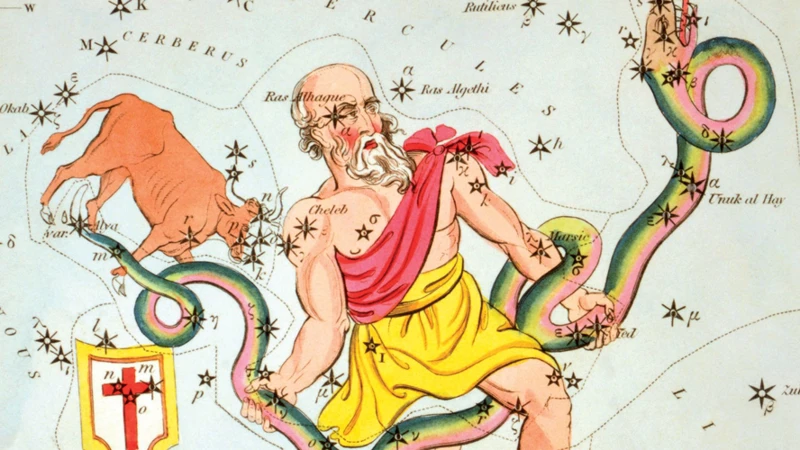
The creation stories in Hindu mythology are a tapestry of diverse and mesmerizing narratives that attempt to unravel the origins of the universe and life itself. One of the most well-known creation stories involves the triumvirate of gods – Brahma, Vishnu, and Shiva. According to this myth, Brahma is the creator of the universe, Vishnu is the preserver, and Shiva is the destroyer. Another captivating tale is the Churning of the Ocean, where the gods and demons join forces to churn the mythical ocean, resulting in the emergence of various treasures and divine beings. These creation stories not only provide insight into the Hindu worldview but also explore profound philosophical questions about the nature of existence and the cyclical nature of time and creation. Understanding these stories is essential to comprehending the depth and complexity of Hindu mythology.
1.1 The Story of Brahma, Vishnu, and Shiva
In Hindu mythology, the story of Brahma, Vishnu, and Shiva is a captivating tale that explores the roles of these three major deities in the creation, preservation, and destruction of the universe. According to the myth, Brahma is the creator who brings forth the universe and all living beings. He is often depicted with four heads, symbolizing his vast knowledge and creativity. However, Brahma is not widely worshiped compared to Vishnu and Shiva.
Vishnu, the preserver, is believed to protect and maintain the universe. He is often portrayed as having blue skin and holding various sacred objects, such as the discus and conch shell. Vishnu is known for his avatars or incarnations, including the popular ones like Rama and Krishna, who descend to Earth to restore cosmic balance and vanquish evil.
Shiva, the destroyer, is a complex deity who symbolizes the constant cycle of creation and destruction. He is depicted with matted hair, a third eye on his forehead, and a crescent moon adorning his head. Shiva is often associated with transformation, meditation, and asceticism. His destructive aspect is not meant to be negative but rather a necessary part of the cosmic process.
The relationship between Brahma, Vishnu, and Shiva is interconnected and represents the aspects of creation, preservation, and destruction in Hindu cosmology. It is believed that these deities are manifestations of the Supreme Being, link. While Brahma creates the universe, Vishnu preserves it, and Shiva brings about its eventual destruction to make way for a new cycle of creation. Together, these three deities play crucial roles in maintaining cosmic balance and upholding the order of the universe in Hindu mythology.
1.2 The Churning of the Ocean
In Hindu mythology, the tale of the Churning of the Ocean is a captivating and intricate story that explores the cosmic struggle between gods and demons in their quest for immortality. This myth begins with the gods, led by Indra, and the demons, led by their king, Bali, coming together to churn the mythical Ocean of Milk, also known as the Kshirasagara. They do this by using Mount Mandara as the churning rod and Vasuki, the king of snakes, as the rope.
As the gods and demons churned the ocean, various celestial and divine beings emerged. One of the first to arise was the goddess Lakshmi, the embodiment of wealth and prosperity. She became the wife of Lord Vishnu, one of the most revered deities in Hindu mythology. The mythical wish-fulfilling tree, Kalpavriksha, and the divine cow, Kamadhenu, also emerged from the churning.
However, the churning of the ocean was not without challenges. As the process continued, several apparitions emerged, including the deadly poison known as Halahala. This poison threatened to destroy all of creation. To save the universe from its devastating effects, Lord Shiva, the destroyer, consumed the poison. Through his divine powers, he was able to swallow the poison without letting it harm him.
Eventually, after immense perseverance, the nectar of immortality, known as Amrita, emerged from the ocean. This elixir was coveted by both the gods and the demons, as it would grant immortality and immense power. However, thanks to the cunning strategy of Lord Vishnu, who took on the form of the enchanting Mohini, the gods were able to attain the nectar and bestow it upon themselves. This event solidified their status as immortal beings and solidified the gods’ supremacy over the demons.
The Churning of the Ocean is a foundational myth in Hindu mythology, symbolizing the eternal struggle between good and evil, the cyclical nature of creation, and the rewards gained through perseverance and unity. This tale serves as a reminder of the intricate and profound narratives that shape the rich tapestry of Hindu mythology.
Please note that there is no relevant anchor in this paragraph to insert a link.
The Gods and Goddesses
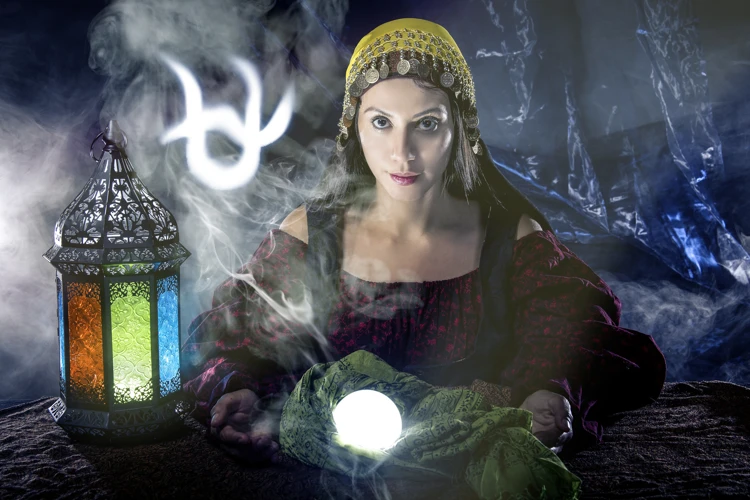
The pantheon of gods and goddesses in Hindu mythology is a diverse and captivating array of divine beings, each with their own unique powers and attributes. Among them is Brahma, the creator of the universe, who is often depicted with four heads representing the four Vedas. Then there is Vishnu, the preserver, who incarnates on Earth to restore balance and righteousness. Accompanying Vishnu is his eternal consort Lakshmi, the goddess of wealth and prosperity. Saraswati, the goddess of knowledge and arts, is revered by scholars and artists alike. Shiva, the destroyer, is known for his fierce form as well as his role as a benevolent deity who brings transformation and liberation. Two fierce and powerful goddesses also hold significant importance – Durga, the warrior goddess who combats evil, and Kali, the embodiment of divine fury and time. These gods and goddesses play integral roles in the Hindu pantheon, representing different aspects of existence and inspiring devotees to pursue various paths to spiritual enlightenment.
2.1 Brahma, the Creator
Brahma, known as the creator in Hindu mythology, holds a significant role in shaping the universe and all living beings. Depicted with four heads and four arms, Brahma represents the supreme cosmic power responsible for the creation of the world. According to Hindu scriptures, Brahma emerges from a golden egg floating in the primordial waters. He then creates the earth, sky, and all the living beings that inhabit them. Brahma is often associated with knowledge, wisdom, and intellect. His consort is the goddess Saraswati, who embodies creativity and knowledge. Together, they symbolize the power of creation and the pursuit of wisdom. Despite being the creator, Brahma is not widely worshipped in Hinduism. This is because, in a mythological tale, Brahma lied about the existence of an origin, which angered Shiva. As a result, Shiva cursed Brahma that he would not be widely worshipped. Nevertheless, Brahma’s presence in Hindu mythology remains significant, illustrating the multifaceted nature of divinity and the complexities of creation.
2.2 Vishnu, the Preserver
In Hindu mythology, Vishnu is revered as the preserver of the universe. He is one of the principal gods and is known for his role in maintaining balance and harmony in the cosmos. Vishnu is often depicted with blue skin and four arms, holding various symbolic objects that represent his divine powers. One of the most famous stories associated with Vishnu is the Avatar concept, where he takes on different forms to protect the world in times of crisis. Some of his most well-known avatars include Lord Rama, who is the protagonist of the epic tale The Ramayana, and Lord Krishna, who plays a pivotal role in the Mahabharata. By assuming these avatars, Vishnu ensures that righteousness prevails over evil and maintains the cosmic balance. His presence as a preserver brings hope and reassurance to Hindus, who deeply revere his benevolence and divine intervention in the face of adversity. To truly understand the depth and significance of Vishnu in Hindu mythology, it is important to explore the myriad stories and legends that surround his divine persona.
2.3 Shiva, the Destroyer
In Hindu mythology, Shiva is a highly revered deity known as the “Destroyer.” Despite this title, Shiva’s role as the Destroyer encompasses not only destruction but also renewal and transformation. Shiva is often depicted as a meditating deity with a blue throat, representing his consumption of poison to save the world. He is associated with both the creative and destructive aspects of life, symbolizing the cyclical nature of existence. As the destroyer, Shiva is responsible for ending cycles and paving the way for new beginnings. His divine weapon is the trishula, a three-pronged spear that represents the three fundamental aspects of reality – creation, preservation, and destruction.
Shiva is often portrayed as an ascetic, residing in the lofty peaks of Mount Kailash, immersed in deep meditation. He is also associated with various forms, such as Nataraja, the cosmic dancer, who embodies the rhythmic cycle of creation and destruction. Shiva is a complex deity, embodying contradictions; he is both fierce and benevolent, terrifying and compassionate. His consort, Parvati, balances his energies with her nurturing and gentle nature.
Worship of Shiva is widespread in Hinduism, with devotees seeking his blessings for spiritual growth, protection, and liberation from worldly attachments. Numerous temples dedicated to Shiva can be found throughout India, with the most famous being the Kashi Vishwanath Temple in Varanasi and the Brihadeeswarar Temple in Thanjavur. Each year, the festival of Maha Shivaratri is celebrated in honor of Shiva, where devotees observe fasting and offer prayers to seek his divine grace.
Shiva’s portrayal in Hindu mythology reflects the intricate balance between creation and destruction, the transient nature of life, and the eternal cycle of birth and death. Understanding Shiva’s role as the Destroyer provides insight into the complexity of Hindu cosmology and spirituality.
2.4 Lakshmi, the Goddess of Wealth
Lakshmi, the Goddess of Wealth, holds a significant place in Hindu mythology and is revered as the embodiment of abundance, prosperity, and good fortune. In Hindu cosmology, she is considered the consort of Lord Vishnu, the preserver of the universe. Lakshmi is often depicted with four arms, representing her ability to provide blessings in various forms. In her hands, she holds symbols of wealth and prosperity, such as a lotus flower, symbolizing purity, and a pot of gold, symbolizing material wealth. She is usually seen adorned with exquisite jewelry, symbolizing her association with luxury and opulence. As the Goddess of Wealth, Lakshmi is believed to bring prosperity and success to her devotees, and her blessings are sought by business owners, families, and individuals alike. Devotees worship her during festivals such as Diwali, the Festival of Lights, where her presence is celebrated with grandeur and devotion. It is believed that by worshiping Lakshmi, one can invite good fortune and abundance into their lives. The worship of Lakshmi is characterized by various rituals, offerings, and prayers that express gratitude and seek her blessings. She is considered a beacon of light in times of financial difficulties, and her devotees often seek her guidance for prosperity and wealth management. The worship of Lakshmi is not solely focused on material wealth; it also encompasses spiritual prosperity, inner peace, and a sense of fulfillment. The mythology surrounding Lakshmi emphasizes the importance of balance and gratitude when it comes to the acquisition and use of wealth. She is believed to reward those who use their wealth for the greater good and display generosity towards others. The awe-inspiring tales of Lakshmi’s benevolence continue to inspire millions of believers around the world, reminding them of the potential for abundance and prosperity that lies within their grasp.
2.5 Saraswati, the Goddess of Knowledge
Saraswati, the Goddess of Knowledge, holds a significant place in Hindu mythology as the embodiment of wisdom, creativity, and intellectual pursuits. She is often depicted with a serene appearance, dressed in pristine white garments, symbolizing purity and transcendent knowledge. Saraswati is associated with various domains of knowledge, including music, arts, literature, and science. She is revered by scholars, students, and artists alike, who seek her blessings for inspiration and guidance in their pursuit of knowledge. In Hindu iconography, Saraswati is often depicted holding a veena, a musical instrument representing the harmonious blending of arts and intellect. As the goddess of speech, she is also depicted with a book and a japa mala (prayer beads) in her hands, symbolizing the importance of verbal communication and recitation of sacred texts. Devotees worship Saraswati during educational ceremonies and festivals, such as Saraswati Puja or Vasant Panchami, where they seek her blessings for success in their academic and creative endeavors. Exploring the story and attributes of Saraswati provides a glimpse into the profound reverence and importance given to the pursuit of knowledge in Hindu culture.
2.6 Durga, the Warrior Goddess
Durga, known as the warrior goddess, is one of the most powerful and revered deities in Hindu mythology. She is depicted as a fierce and courageous goddess who embodies strength, protection, and victory. Durga is often portrayed with multiple arms, each holding a weapon given to her by various gods, symbolizing her divine prowess in battle. One of her most famous legends is the battle against the buffalo demon, Mahishasura, who had threatened the gods. Durga, with her divine weapons and her lion as her mount, fearlessly faced Mahishasura and ultimately vanquished him, restoring peace and balance to the universe. This depiction of Durga as a warrior goddess serves as a reminder of the power and determination required to overcome challenges and fight against evil. Her symbolism extends beyond physical strength, representing inner strength, courage, and the ability to overcome obstacles in one’s own life. Through her stories, Durga inspires believers to tap into their own inner warrior spirit and face difficulties head-on with unwavering resolve. To learn more about the portrayal of mythical figures in films, you can explore portraying Ophiuchus in actors’ biographical films. Additionally, Durga’s embodiment of strength can also provide valuable insights into time management in the workplace, as balancing multiple roles and responsibilities requires resilience and strategic planning akin to a warrior’s mindset.
2.7 Kali, the Fierce Goddess
Kali, the Fierce Goddess, stands as a prominent figure in Hindu mythology. Revered for her intense power and ferocity, Kali symbolizes the darker aspects of existence. Depicted with a fearsome appearance, Kali’s tongue lolls out, and she is adorned with a necklace of skulls. Her image exudes an aura of strength and intensity. Kali is believed to be the personification of time and is associated with destruction and transformation. She is often portrayed in battle with various demons and evil forces, using her unparalleled strength to defeat them. However, beyond her fearsome exterior, Kali is also revered as a protective mother goddess. She is known to fiercely guard her devotees from harm and grant them liberation from the cycle of life and death. Kali’s symbolism and worship hold deep significance, representing the dance between creation and destruction and the eternal cycles of birth and rebirth. Her story serves as a reminder that even in the face of darkness, there is transformative and protective power that can lead to spiritual liberation.
The Epic Tales
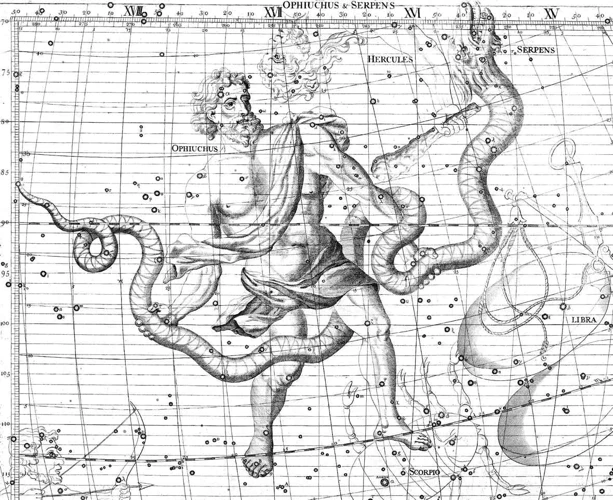
The epic tales of Hindu mythology are a treasury of captivating narratives that have been passed down through generations. One such tale is The Ramayana – The Adventures of Lord Rama, which follows the journey of Prince Rama as he embarks on a quest to rescue his wife Sita from the clutches of the demon king Ravana. Filled with adventure, courage, and devotion, this epic showcases the triumph of good over evil and has become a timeless symbol of righteousness. Another legendary tale is The Mahabharata – The Great War of Kurukshetra, which chronicles the conflict between the Pandavas and the Kauravas, culminating in an epic battle that shapes the destiny of the world. These stories, steeped in moral dilemmas and profound teachings, offer insights into the complexities of human nature and the eternal struggle between light and darkness. With each epic tale, Hindu mythology invites us into a world of awe-inspiring adventures and profound wisdom.
3.1 The Ramayana – The Adventures of Lord Rama
The Ramayana is an epic tale that tells the extraordinary adventures of Lord Rama, a revered prince and embodiment of righteousness. This timeless story revolves around Rama’s journey to rescue his wife, Sita, who has been abducted by the demon king, Ravana. Alongside his loyal brother, Lakshmana, and a devoted army of monkeys and bears, Rama faces numerous challenges and overcomes impossible obstacles. The Ramayana showcases the virtues of loyalty, devotion, honor, and the triumph of good over evil. It features colorful characters such as Hanuman, the monkey god who becomes Rama’s steadfast ally, and Ravana, the formidable antagonist with ten heads. The epic takes us through enchanting forests, treacherous battles, and tests of faith. Through this captivating narrative, the Ramayana teaches us valuable life lessons, explores the complexities of human nature, and celebrates the power of love, perseverance, and sacrifice. Embodied in Rama, we witness the embodiment of dharma, duty, and divine grace. The Ramayana continues to be cherished and revered by millions, serving as an eternal source of inspiration and spiritual guidance.
3.2 The Mahabharata – The Great War of Kurukshetra
The Mahabharata is an epic tale that unfolds the riveting saga of the Great War of Kurukshetra. Spanning an extensive narrative, this ancient text revolves around the conflict between two branches of a royal family – the Kauravas and the Pandavas. At the heart of the story is the rightful claim to the throne and the subsequent struggle for power. The Kurukshetra war is fought on a grand scale, with countless warriors joining the battle, including demigods and mythical creatures. The fierce battles, complex alliances, and treacherous strategies showcased in the Mahabharata make it a remarkable chronicle of heroism, morality, and the eternal struggle between good and evil. This epic is not merely a historical account of war but also a reflection of philosophical, moral, and ethical dilemmas faced by the characters. It delves deep into human nature, exploring themes of duty, honor, loyalty, and righteousness. The Mahabharata continues to be a timeless masterpiece that resonates with audiences across generations, offering valuable insights into the complexities of human existence and the eternal quest for righteousness.
Conclusion
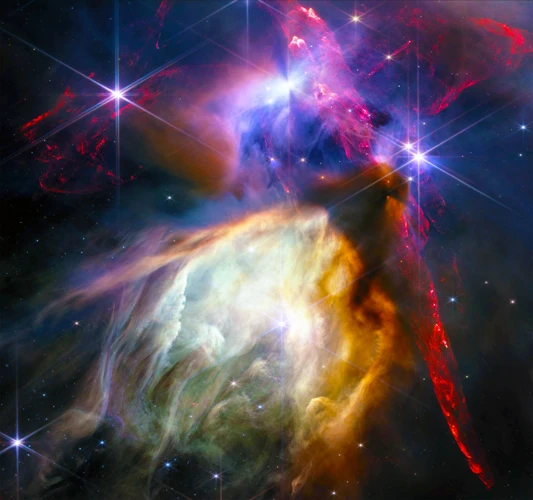
In essence, tracing the origins of Hindu mythology is a journey that takes us deep into the realms of creation, gods, and epic tales. Through the intricacies of these stories, we gain insights into the rich tapestry of Hindu culture, beliefs, and values. The creation stories, with their portrayal of Brahma, Vishnu, and Shiva, offer a glimpse into the divine forces that shape the universe. The gods and goddesses, from Brahma to Lakshmi, Saraswati, Durga, and Kali, represent powerful archetypes that embody aspects of life and spirituality. The epic tales of the Ramayana and the Mahabharata transport us to a world of heroism, duty, and moral dilemmas. They teach us about the importance of righteousness, loyalty, and the eternal battle between good and evil. As we reflect upon Hindu mythology, we realize that it is not just a collection of stories, but a profound reflection of human existence and the universal quest for meaning. It is a testament to the human capacity for imagination, creativity, and spiritual exploration. Across time and generations, these myths and legends have endured, shaping the cultural fabric of millions of people. So, let us continue to delve into the enchanting world of Hindu mythology, celebrating the timeless wisdom and eternal truths encapsulated within its vibrant stories.
Frequently Asked Questions
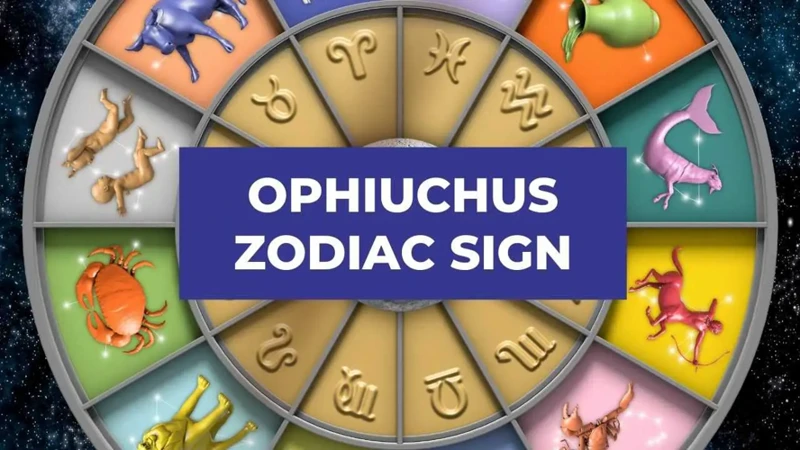
1. What is the significance of the story of Brahma, Vishnu, and Shiva?
The story of Brahma, Vishnu, and Shiva symbolizes the cycle of creation, preservation, and destruction. It depicts the harmony between different cosmic forces and highlights the interconnectedness of life and death.
2. How does the Churning of the Ocean story relate to Hindu mythology?
The Churning of the Ocean is a pivotal event in Hindu mythology that showcases the eternal battle between good and evil. It represents the pursuit of knowledge, the rewards of perseverance, and the emergence of important deities and treasures.
3. Who is Brahma, and what is his role in Hindu mythology?
Brahma is considered the creator of the universe in Hindu mythology. Despite being one of the three main gods, he is not as actively worshipped as Vishnu and Shiva.
4. What is the role of Vishnu in Hindu mythology?
Vishnu is revered as the preserver of the universe. He incarnates in various forms, known as avatars, to restore cosmic order and protect humanity from evil.
5. Who is Shiva, and what significance does he hold in Hinduism?
Shiva is the destroyer in Hindu mythology, representing the constant cycle of creation, destruction, and rebirth. He is also associated with meditation, enlightenment, and the dissolution of the ego.
6. What is the significance of Lakshmi in Hindu mythology?
Lakshmi is the goddess of wealth and prosperity. She symbolizes abundance, good fortune, and the importance of generosity and material well-being in Hindu culture.
7. Who is Saraswati, and why is she important in Hindu mythology?
Saraswati is the goddess of knowledge, music, and the arts. She represents wisdom, creativity, and the power of education, making her a highly revered deity among scholars and artists.
8. What is the significance of Durga in Hindu mythology?
Durga is a fierce warrior goddess who battles and triumphs over evil forces. She represents female strength, courage, and protection, making her an inspiration for women empowerment.
9. Who is Kali, and what is her role in Hindu mythology?
Kali is a fierce and formidable goddess, often depicted with a dark complexion and a necklace of skulls. She is a symbol of time, transformation, and the annihilation of evil forces.
10. What are the Ramayana and Mahabharata, and why are they significant in Hindu culture?
The Ramayana and Mahabharata are epic tales that form an essential part of Hindu mythology and literature. The Ramayana recounts the adventures of Lord Rama, showcasing righteousness and the triumph of good over evil. The Mahabharata narrates the great war of Kurukshetra and presents complex moral and philosophical dilemmas while exploring the concepts of duty and destiny.
References
Frequently Asked Questions

FAQs about Hindu Mythology
1. What is Hindu mythology?
Hindu mythology is a collection of religious stories, legends, and traditions that form the foundation of Hinduism. It includes tales of creation, gods and goddesses, epic battles, and moral lessons.
2. How old is Hindu mythology?
Hindu mythology dates back thousands of years and has evolved over time. Many of the stories and concepts can be traced back to ancient texts such as the Vedas and the Puranas.
3. Who is Brahma, Vishnu, and Shiva?
Brahma is the creator god, Vishnu is the preserver god, and Shiva is the destroyer god. Together, they are known as the Trimurti and are central figures in Hindu mythology.
4. What is the significance of the story of the Churning of the Ocean?
The story of the Churning of the Ocean is a popular myth in Hinduism. It symbolizes the eternal struggle between good and evil and the quest for immortality. It also introduces important gods, such as Vishnu in his avatar as the tortoise.
5. Who is Lakshmi and what is her role in Hindu mythology?
Lakshmi is the goddess of wealth and prosperity. She is the consort of Vishnu and is often depicted with him. Lakshmi is revered for bringing good fortune and abundance to those who worship her.
6. What is the significance of Saraswati, the Goddess of Knowledge?
Saraswati is the goddess of knowledge, music, and arts. She is often portrayed playing a musical instrument and is associated with wisdom, learning, and creativity. Saraswati is revered by students and scholars alike.
7. Who is Durga and why is she considered a warrior goddess?
Durga is a powerful goddess who embodies feminine energy and protects the universe from evil forces. She is often depicted riding a lion and wields weapons in her multiple arms. Durga’s story highlights the triumph of good over evil.
8. What is the significance of Kali, the fierce goddess?
Kali is the fierce goddess of time, death, and destruction. She is often depicted with a wild and terrifying appearance, symbolizing the impermanence of life. Kali is also associated with empowerment and the dissolution of ego.
9. What are the Ramayana and the Mahabharata?
The Ramayana is an epic tale that follows the adventures of Lord Rama in his journey to rescue his wife, Sita. The Mahabharata is a larger epic that focuses on the Great War of Kurukshetra and involves various gods, warriors, and moral dilemmas.
10. How do these myths and stories impact Hindu culture?
These myths and stories play a significant role in Hindu culture and are woven into various aspects of daily life, festivals, rituals, and worship. They provide moral guidance, philosophical ideas, and serve as a source of inspiration and devotion for millions of Hindus.
References
- What is Hinduism? | Hinduism Major Beliefs, Origin & History
- Hinduism | Origin, History, Beliefs, Gods, & Facts
- The Hindu Interpretation of Creation | The Story of God






